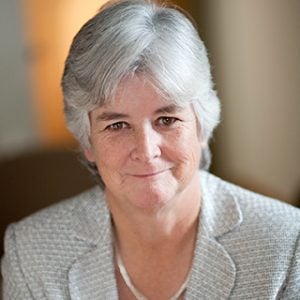The Best Business Schools for Finance

Though it has been over a decade since the global financial crisis of 2008, investment banking and the financial services industry still aren’t the same. Overall, the percentage of MBAs interested in a career in finance has made a slight recovery, but the products/services and tech industries still lure more and more grads.  According to the most recent 2018 Alumni Perspectives Survey Report by the Graduate Management Admission Council, the percentage of alumni from two-year, full-time MBA programs working in the finance/accounting industry dropped was 16 percent in 2018, compared to 11 percent in 2017. Products/services and technology maintained the lead at 19 percent each. Government/nonprofit (12 percent) surpassed consulting (10 percent) as the fourth most popular choice of 2018 graduates. At the top schools, however, consulting has remained a top contender for a career path as about 30 percent of MBA graduates choose it.
According to the most recent 2018 Alumni Perspectives Survey Report by the Graduate Management Admission Council, the percentage of alumni from two-year, full-time MBA programs working in the finance/accounting industry dropped was 16 percent in 2018, compared to 11 percent in 2017. Products/services and technology maintained the lead at 19 percent each. Government/nonprofit (12 percent) surpassed consulting (10 percent) as the fourth most popular choice of 2018 graduates. At the top schools, however, consulting has remained a top contender for a career path as about 30 percent of MBA graduates choose it.
Still, finance is an interesting, lucrative career path for MBA graduates. The work can be widely varied, giving quants ample opportunity to engage their analytical expertise. Not only that, the average graduate earns more than $115,000 in her first year based on the latest U.S. News & World Report. And beyond the money and the work itself, there’s also considerable prestige in working for top firms, which include Goldman Sachs, Morgan Stanley, JP Morgan/Chase, Bank of America, Merrill Lynch, Deutsche Bank, and Blackstone, among others.
We get it. For many, finance presents a dynamic, rewarding career path that can also serve as a jumping off point for many future opportunities, including starting your own firm. For those of you with this route in mind, we’ve gathered together a list of business schools best positioned to help you earn a job in the finance industry.
Business Schools for Finance: Latest School Placements & Earnings
There are multiple ranking systems that examine top MBA programs for finance. The Financial Times, for example, segments out its own list—Top MBAs for Finance—as part of its annual global ranking of top MBA programs. For 2018, the ranking placed Stanford Graduate School of Business (GSB) in the #1 slot, with alumni from that school three years out from graduation earning an average salary of $252,000. Stanford is not only the top school for earnings, but also sent the most graduates into the field of top-tier programs. Stanford GSB sent 38 percent of its 2017 graduates into finance, only matched by NYU / Stern (ranked 5) and Cornell Johnson (ranked 18).
For the purposes of this article, we’re going to review the schools that send the greatest percentage of their students into finance and, particularly, investment banking. Typically, this statistic indicates that more of the school’s resources will be allocated toward preparing graduates for success in the field, both in terms of faculty and coursework and in terms of career services, including cultivating relationships with industry employers and bringing in top recruiters to snap up those students.
These Schools Send More of Their MBA Grads into Investment Banking
Five schools lead the pack in terms of percentage of graduates in the Class of 2018 heading into finance and, particularly, investment banking. While 31 percent of Stanford GSB’s Class of 2018 went into finance, only 2 percent took on investment banking roles. Two of the top five—Columbia Business School and NYU Stern School of Business—are located in New York City, one of the world’s greatest financial hubs. Two more—the University of Pennsylvania’s Wharton School and the University of Chicago Business School—are known as quant-focused finance powerhouses. Cornell’s S.C. Johnson Graduate School of Management has also begun to establish a solid foothold in the investment banking space.
Here’s what portion of grads these top schools send into finance, at a glance:
- Columbia Business School—32.2 percent (12.3 percent investment banking/brokerage)
- University of Chicago Booth School of Business—31.6 percent (10.5 percent investment banking/brokerage)
- New York University Stern School of Business—33.8 percent (26.2 percent investment banking/brokerage)
- University of Pennsylvania’s Wharton School—36.9 percent (13 percent investment banking/brokerage)
- Cornell’s Johnson Graduate School of Management—32 percent (19 percent investment banking/brokerage)
The percentage of 2018 graduates heading into finance has only increased at the Wharton School over the Class of 2017. At Columbia, the 33.6 percent taking jobs in consulting narrowly outpaced the 32.2 percent heading into finance. At the other four schools, financial services drew more grads than consulting—the second most common industry destination. At NYU Stern, 33.8 percent went into financial services, as compared to just 28.4 percent heading into consulting. At Chicago Booth, it was 31.6 percent financial services, followed by 31 percent consulting. At Wharton, the stats were 36.9 percent financial services, trailed by 25 percent consulting. And finally, at Johnson, 32 percent of Class of 2018 grads headed into jobs in financial services, as compared to 25 percent going into consulting.
What Those Newly Minted Finance MBAs Get Paid
Next, let’s take a look at salaries. Graduates heading into financial services. Columbia Business School reported a median salary in finance of $134,718 overall, and $125,000 in investment banking. Wharton followed at a median of $130,000 starting salaries in finance, and $125,000 in investment banking. The average salary out of Cornell / Johnson increased slightly to $128,254 compared to last year in finance, and $137,738 was the average for those going into investment banking. Booth and NYU / Stern noted that the average salary for graduates entering finance was $125,000, and also the same for investment banking. In every case, an average signing bonus of approximately $40,000 to $50,000 was de rigueur.
A Closer Look at Faculty at the Best Business Schools for Finance
While the endgame—where graduates land jobs—is understandably on everyone’s mind, we’d like to posit that who students learn from and what they learn is equally as important a consideration in where to attend business school. In this next section we’ll take a closer look at the finance faculty and related coursework at each of these leading business schools for finance.
Faculty and Coursework at Columbia

The advantages of a New York City location are also reflected in CBS’s faculty and coursework. The Finance division and Economics division together account for more than half of all classes and counting approximately 50 faculty members, including adjunct and visiting professors. As at Stern, their backgrounds represent a powerful mix of theory and practice. In addition, many of its finance courses involve visits from industry professionals, allowing students to gain a better understanding of how their course material applies to the real world. Among CBS’s star professors is Joseph Stiglitz, former senior vice president of development economics and chief economist of the World Bank, who won the Nobel Prize in Economics in 2001 for the analysis of markets with asymmetric information.
Also of potential interest to aspiring bankers, the CBS core includes a half-term course called “Global Economic Environment.” Taken during the spring semester, it examines the way a company’s performance and management may be influenced by external factors across an entire economy, drawing on current events to illustrate the practical implications of the concepts covered.
CBS’s Program for Financial Studies also offers suggested electives for students pursuing careers in investment banking and corporate banking. These include “Financial Statement Analysis and Valuation,” which covers how firms communicate with one another through financial statements and involves analyses of publicly traded companies; “Debt Markets,” which provides a comprehensive survey of the five major debt markets and their derivative dependencies, and “Advanced International Corporate Finance,” which explores varied decision-making situations regarding international capital budgeting.
There is also a Value Investing area of focus available to CBS students, administered by the Heilbrunn Center for Graham & Dodd Investing. Designed to teach students to find value that the market might not see and make profitable investments accordingly, this focus area includes courses ranging from “Security Analysis,” which teaches students to make investment decisions by analyzing business models and financial statements, to “Distressed Value Investing,” which covers the opportunities of investing in companies in bankruptcy.
Finally, second-year MBA students at CBS also can participate in project-based electives called Master Classes, in which they analyze the problems of a partner organization and make a recommendation on the issue at hand, and several involve projects related to investment banking.
Faculty and Coursework at Chicago Booth
Chicago Booth has long been considered a powerhouse in terms of its finance faculty and coursework. With approximately 40 finance professors on staff, Chicago Booth offers students interested in financial services careers access to a wealth of research, expertise, and course offerings in this area.

Faculty members include the distinguished Eugene Fama, who is known as the “father of modern finance” for his research on markets and market efficiency and holds the 2013 Nobel Prize in Economics. There’s also Steven Neil Kaplan, a professor of entrepreneurship and finance who ranks among the top 60 in paper downloads and paper citations on the SSRN (Social Science Research Network). Other finance professors bring experience as executives of major investment banks, board members of public and private companies, and members of the Federal Reserve Board.
In terms of coursework, Chicago Booth’s MBA curriculum is known for its flexible structure. To fulfill disciplinary requirements, students are able to select one of 14 options to tailor their studies to their interests, objectives, and current level of knowledge.
Under the Foundation Courses element of the core, Chicago Booth students take one course each in “Financial Accounting,” “Microeconomics,” and “Statistics.” Students can select a Fundamental Course in each of these areas or select from a list of Advanced Alternatives if they already demonstrate a sound foundation in the subject.
In addition to enrolling in three Foundation courses, Chicago Booth students can choose one of 14 areas of specialization. While not required, students usually choose between one and three concentrations to develop the tools and analytic skills relevant to areas of particular interest.
Chicago Booth students who hope to enter investment banking might choose to concentrate in both Accounting and Finance. Through the Accounting concentration, students learn how to assess a firm’s financial health while making investment decisions. The Finance concentration, meanwhile, covers both corporate finance and investments, preparing students to make decisions at the business and market levels. Among the courses offered as part of the Finance concentration are “Advanced Investments,” which picks up where the introductory “Investments” class leaves off, examining the activities of top financial institutions and the changes in asset pricing over the past 20 years. Other courses include “Financial Instruments,” which examines the pricing of derivatives with a pointed focus on managing risk, and “Financial Markets and Institutions,” which delves into studies of financial institutions, financial crises, and the design of financial contracts.
And students seeking a very deep grounding in finance theory and practice could also complete the Analytic Finance concentration, which will equip them to apply sophisticated quantitative tools to complex financial questions in a range of contexts.
Faculty and Coursework at NYU Stern
While top-tier business schools across the board boast star faculty and fantastic foundational courses in finance, NYU Stern sets itself apart in terms of the array of specializations offered that are especially relevant to students interested in financial services.
Nobel Laureate and NYU Stern Professor Robert Engle
Of its 25 specializations, seven in particular—Banking, Corporate Finance, Finance, Financial Instruments and Markets, Financial Systems and Analytics, Quantitative Finance, and FinTech—fall into this category, and Stern students can take up to three. Stern also offers a number of individual courses focused on the investment banking field, including “Law and Business of Investment Banking,” “Investment Banking,” “Private Equity in Entertainment and Media” and “Entertainment Finance.”
As for its finance faculty, in addition to more than four dozen full-time faculty in the field, there are also more than 50 adjunct faculty members and visiting professors. This combination of leading academics and practitioners includes NYU Stern Finance Professor Robert Engle, who won the 2003 Nobel Prize in Economics for his work on statistical modeling of time-varying volatility, as well as Professor Edward Altman, who was named one of the “100 Most Influential People in Finance” by the Treasury & Risk Management magazine in 2005.
Faculty and Coursework at Wharton
At Wharton, there are approximately 40 standing finance faculty, which doubles when you include the secondary, affiliated, and emeritus faculty. This offers Wharton MBA students the opportunity to learn from professionals with a wide range of specializations from international banking to corporate investment and financing.

As for the leading practitioners at the school, there are many professors that stand out. For example, Michael Roberts has won more than 30 awards over the course of his teaching and research career including the 2004, 2006, and 2008 Excellence in Teaching Award at the Wharton School as well as the Jensen Prize—for his first-place paper on corporate finance and organizations published in the Journal of Financial Economics 2016. There’s also Robert P. Inman who has consulted for various esteemed organizations around the world, including the World Bank from 1994 to the present and the Republic of South Africa from 1994 to 2000. And it’s hard to think of finance at Wharton without Professor Jeremy Siegel immediately coming to mind. In addition to teaching at Wharton, Siegel comments extensively on the economy and financial markets in regular appearances on networks including CNN, CNBC, and NPR.
When it comes to coursework, Wharton MBA students enjoy a flexible core curriculum that includes 19 majors and nearly 200 electives. Of those majors, students can choose between Accounting and Finance for their specializations. The Accounting major includes classes such as “Cost Management” and “Corporate Valuation,” all of which prepare students for a career in financial accounting. As for Finance, there are courses on “Corporate Finance,” which serves as an introduction to modern financial theory, as well as “Financial Derivatives,” which covers derivative securities within the modern financial architecture.
Faculty and Coursework at Cornell Johnson

Cornell Johnson is another powerhouse of finance. With approximately 22 finance professors on staff, Johnson offers students interested in banking careers access to a wealth of research, expertise, and courses in this area of study. Faculty members include Maureen O’Hara, who has authored books on market microstructure and high frequency trading and more than 100 articles in the field of finance. Her most recent book and course deal with finance and ethics (Something for Nothing: Arbitrage and Ethics on Wall Street). There’s also Professor Murillo Campello, whose work has been cited by the Federal Reserve chairman, mentioned in Congressional hearings, described in the “Economic Report for the President,” and used to advise the U.S. Supreme Court.
As for coursework, Johnson is known for its flexible two-year and one-year MBA programs. As part of the core courses, MBA students are expected to take “Financial Accounting,” “Microeconomics for Management,” and “Managerial Finance” in their first semester. In their second semester, students can choose between eight immersion experiences, three of which deal with the finance industry.
The Corporate Finance Immersion (CFI) teaches MBA students to apply theory with hands-on experience. Students who choose CFI gain a comprehensive understanding of the issues that CFOs encounter and take courses and practicum sessions that give them a competitive edge in the industry. There are also two other Immersion options for students including Investment Banking (IBI) and Investment Research and Asset Management (IRAM). In IBI, MBA students analyze actual transactions and develop new business pitches for CEOs. In IRAM, students acquire critical financial modeling knowledge, analytical tools, and hands-on experience. Some of the courses offered in these immersion experiences include “Financial Statement Analysis,” “Financial Modeling,” “Valuation,” and “Corporate Financial Policy” and “Financial Distress, Bankruptcy, and Restructuring.”
In their second year, MBA students at Johnson can choose from four concentrations to go in depth into a specific area of study including Asset Management, Corporate Finance, Investment Banking, and Private Equity & Venture Capital. Students can also spend a semester at Cornell Tech taking theoretical and applied courses in FinTech.
Where Within Investment Banking Do Recent Grads Land?
When it comes to investment banking and brokerage, NYU Stern is the clear frontrunner, sending a whopping 26.2 percent of its Class of 2018 to work in this field. By comparison, the other four schools all sent between 10 (Chicago Booth) and 19 (Cornell Johnson) percent into banking.

But beyond the sheer volume of grads heading into the field, the prestige of the firms where they land is also an indicator of the relative strength of the various MBA programs. Where are graduates from a given school getting jobs in investment banking? Historically, the term “bulge bracket” has been used to refer to the elite banks—harkening to a time when the names of top-tier banks appeared first and largest on financial industry advertisements. But in recent years, the terminology has shifted toward tier-one, tier-two, and tier-three banks.
While there is not absolute consensus about which banks fall into which tiers, a 2018 release from research firm Coalition identified the tier-one banks as including JP Morgan, Goldman Sachs, Citi, and Bank of America Merrill Lynch (in that order). It went on to list tier-two investment banks as comprising Deutsche, Barclays, Credit Suisse, and HSBC, respectively. In our examination of leading MBA programs for finance, we’ve chosen to zero in on which schools help grads get into these firms.

At Columbia, Goldman Sachs was the top finance employer, hiring 16 graduates. Morgan Stanley hired 6 graduates, Citi 8 graduates, and JP Morgan 9 graduates. In total, 40 graduates earned a position with a tier-one bank (including five at Bank of America Merrill Lynch). Notably, Columbia’s Board of Overseers includes at least three members with deep connections to Morgan Stanley: CBS Dean Emeritus and Professor Meyer Feldberg (MBA ’65), who is a senior advisor at the firm; R. Bradford Evans (MBA ’70), also a senior advisor, and James P. Gorman (MBA ’87), chairman and CEO.
Chicago Booth sent most of its MBA graduates in finance to the JP Morgan (12 graduates) followed by Goldman Sachs and Morgan Stanley (7 graduates each), and Citi (6 graduates). In all, a total of 42 graduates headed to a tier-one bank.
NYU Stern, Wharton, and Cornell Johnson are more guarded with their employment stats. NYU Stern notes companies that hired more than three graduates, but not how many more. An asterisk denoting three or more hires appeared beside every tier-one and tier-two bank for the Class of 2018 save HSBC.
Cornell Johnson, likewise, does not provide specific number of hires, sharing simply that all tier-one and tier-two banks recruit and hire at the school. And Wharton denotes the following top-tier banks as having hired more than two graduates: Bank of America Merrill Lynch, Barclays, Credit Suisse, Deutsche Bank, Goldman Sachs, J.P. Morgan, and Morgan Stanley.
Investment banking took a severe hit in the aftermath of the financial crisis as strong students following a traditionally clear and safe path suddenly found themselves with nowhere to land after graduation. For several years following the crash—subsequent MBA classes avoided IB like the plague, fearful that they too might graduate jobless, or that jobs they did get could disappear when the next “too big to fail” bank went under. Case in point, 33.1 percent of Columbia 2007 MBA graduates went into investment banking and brokerage. By the Class of 2012, that number had fallen to 21 percent.
As evidenced above, investment banking has rebounded some at some schools from those darkest days, but not to its pre-crash levels. This means MBA students who in the past followed scores of others like them along the IB route now are exploring other paths. For some, that’s meant consulting or technology. But others have looked for ways to put their financial prowess to work on the buy side. This diversification within financial services is why all of the schools we’ve highlighted here still report sending a third or more of their graduates into finance.
Looking Beyond the Classroom and Recruiter Relationships
Faculty and curriculum and are an important consideration in choosing between business schools for finance. Placement rates with leading recruiters in the specific area or areas of financial services you hope to pursue are another.
But these are not the only indicators of an finance MBA program’s strengths in training its students to succeed. Another important set of criteria to examine in deciding which business schools to target are the clubs, treks, centers, and other extracurricular opportunities that help round out the education students receive in the classroom.
Student-Led MBA Finance Clubs
Extracurricular activities can play a pivotal role in helping students navigate the job search process successfully. Clubs focused on investment banking at many of the schools we’ve highlighted provide valuable networking and informational events for students. They also often complement some of the resources offered through career services centers, offering peer coaching and interview prep to students as they go through the recruiting process.
CBS features an Investment Banking Club (IBC), which maintains strong ties to Wall Street and provides more than 100 networking, recruiting, and informational events each year. Area investment banks co-sponsor events with the IBC and participate in merger and acquisition case studies, panels, and interview workshops.
The IBC also runs internal programs helping first-year students explore the industry, hosts social gatherings, and puts on events such as a Training the Street Workshop and the Interview Power Prep Session with Professor Donna Hitscherich. Together with the club’s case presentations, résumé reviews and mock interview preparation, these events complement the school’s other resources for helping prepare students for investment banking careers.
At Johnson, the Old Ezra Finance Club offers a coordinated approach to investment banking. Throughout the year, various club meetings provide prospective bankers with the resources needed to secure internship placements at premier institutions such as Barclays, Citi, Credit Suisse, Goldman Sachs, JP Morgan, and more. The Old Ezra approach focuses mainly on interview and networking preparation of potential candidates.
At Chicago Booth, the Investment Banking Group (IBG) is one of the largest student groups on the Chicago Booth campus. There is also a more general Chicago Booth Finance Club for students who may be interested in more than just investment banking.
At Wharton, students convene as part of the Wharton Finance Club, which caters to students interested in investment banking, non-banking corporate finance, and private wealth management. And Wharton also has a student-led MBA Private Equity and Venture Capital Club that claims to be one of the largest and most active professional clubs at the school, with more than 700 members.
In addition to providing resources to current students, student clubs are also a fantastic way for prospective applicants to learn more about schools they are interested in. If finance is your intended path, you’d do well to identify students in leadership roles in clubs that interest you and reach out to learn more about their experiences, both in finance and at their chosen school.
Treks
Many MBA student professional clubs, career services, and courses also offer unique industry trek experiences for students. These experiences typically take a small group of MBA students to a city, region, or country where they can explore, interact with, and learn more about their industry of interest. In most instances, the students visit various companies in their industry and enjoy presentations, Q&A sessions, and various networking opportunities.
At Columbia, the IBC takes students to meet with U.K. investment banks as part of London Banking Days. This two-day event includes panels on banking, sales and trading, and private wealth management, as well as an evening networking event. Participating firms have included Goldman Sachs, JPMorgan, and Credit Suisse.
Chicago Booth MBA students can take a student trek to cities around the world including New York, Los Angeles, Tokyo, Bangalore, London, Hong Kong, and Buenos Aires. For example, there’s an investment banking trek in NYC, which follows up with many of the same firms that come recruiting at the campus.
At NYU Stern, there’s an industry immersion experience in Investment Banking that allows students to learn specific industry knowledge from engaged alums and sponsoring organizations. Specifically, the Investment Banking Immersion (IBI) features four intensive sessions with alumni mentors at Citi’s office in downtown Tribeca.
Then, Cornell Johnson offers student treks organized by geographic concentration, industry sector, or both. Each trek is completely set up by a club including the Investment Management Club (IMC), which each year takes a series of fall treks to New York and Boston to visit JP Morgan, Barclays, Fidelity, and more.
Centers
Then there are the research centers and institutions offered at the various schools. These centers are a focal point for different disciplines and industries, including finance. For example, Johnson has the Parker Center for Investment Research, which offers students instruction and training in the latest analytical tools used on Wall Street, specifically those that can help with careers in investment research and asset management. Another unique opportunity for Johnson students is the Cayuga Fund, a $1 million endowment managed by students as part of a formal class in investments.
At Wharton there are four centers for finance including the Alternative Investments Initiative, which focuses on private equity, hedge funds, venture capital, and wealth management, and the Rodney L. White Center for Financial Research, which was founded in 1969 to support high quality financial economics research.
Chicago Booth has the Fama-Miller Center for Research in Finance, which is designed to enhance academic research in finance, while the Center for Research in Security Prices bridges the gap between theory and practice when it comes to the market. And NYU Stern has the Salomon Center for the Study of Financial Institutions, which looks at commercial banks, investment banks, managed funds, and insurance companies. While CBS has the Advanced Projects and Applied Research in Fintech program, which takes on novel research projects that push the boundaries of technology and finance.
In Closing: Best Business Schools for Finance
Though we’ve focused on the five schools that send more of their grads into finance than any others, that’s certainly not to say that graduates from other schools don’t go on to have incredibly rewarding careers in finance. Stanford and Harvard, for example, send more of their graduates into the highly lucrative private equity field than any of those included here.
This is just to say that this limited list is by no means intended to limit your consideration of finance MBA programs that can help you reach your investment banking and financial career goals. Rather, we hope that by highlighting the strengths of a handful of programs we’ve given you a critical lens through which you can evaluate additional finance programs at business schools.